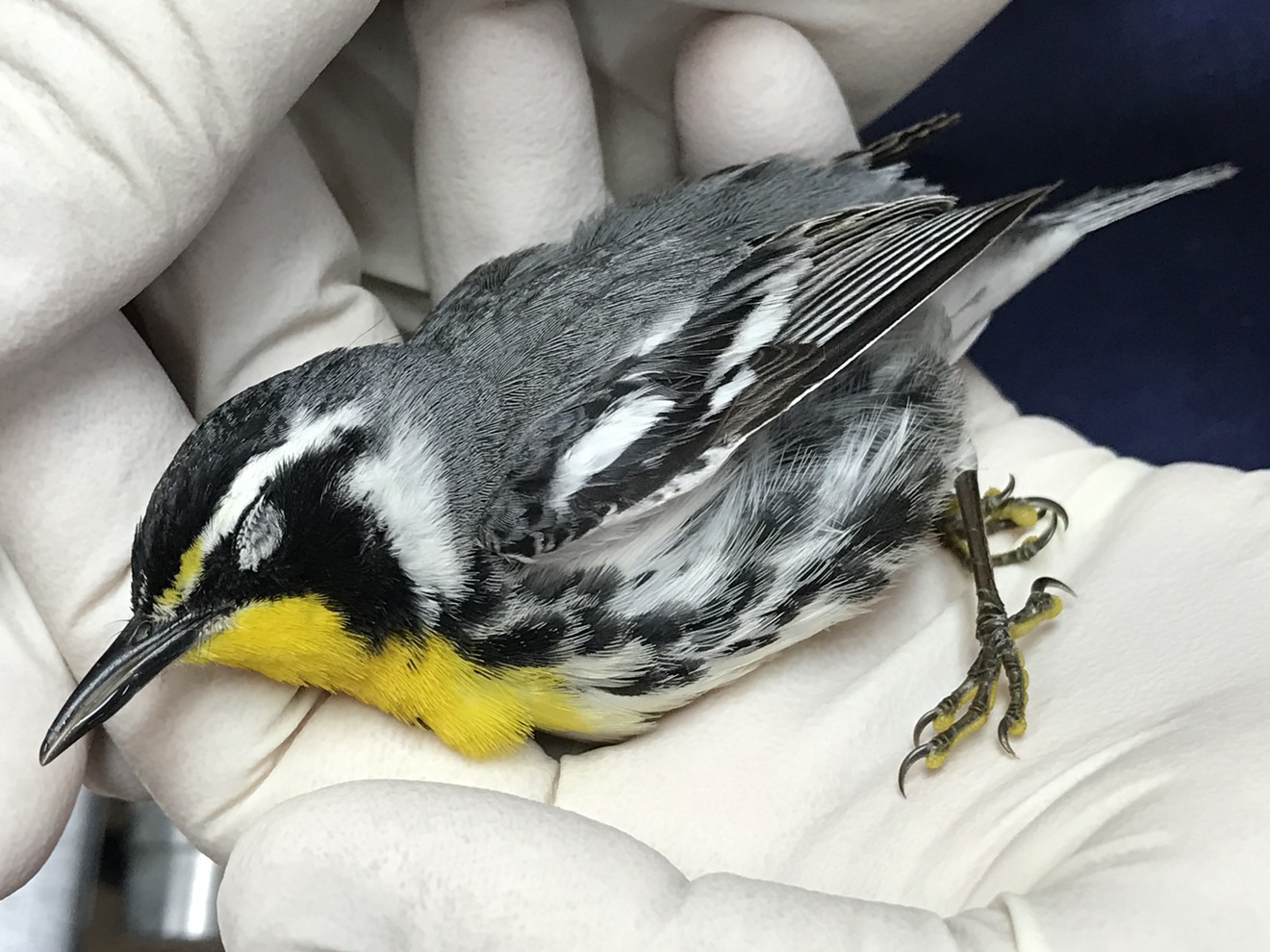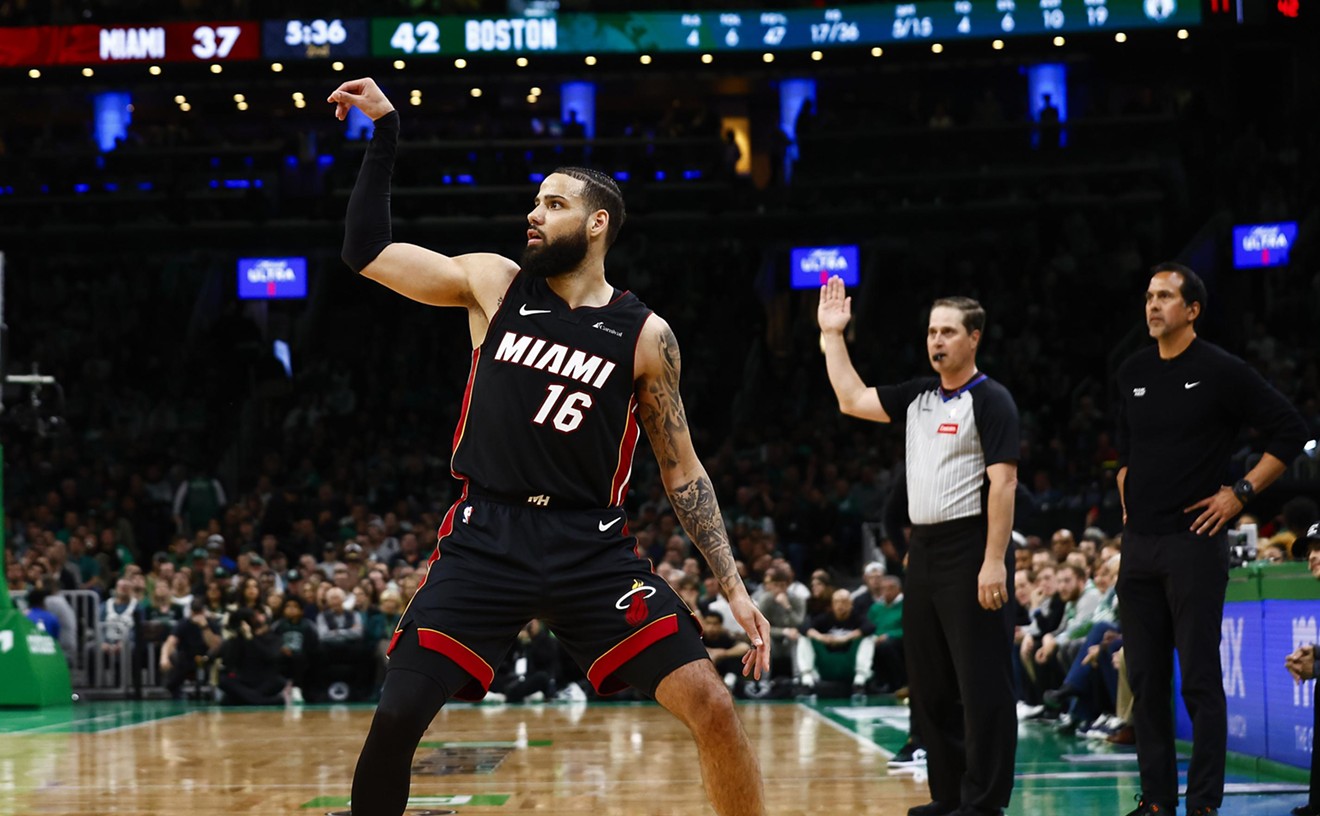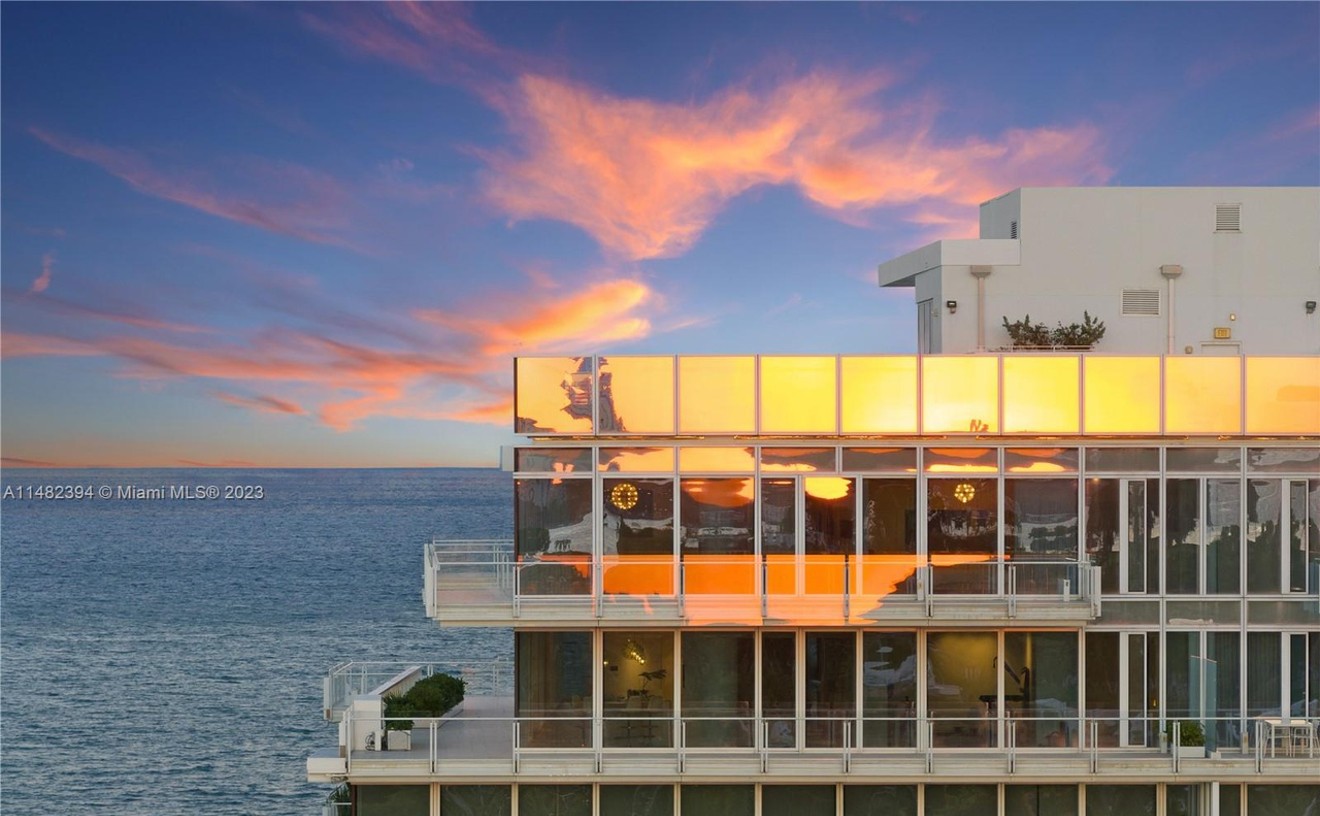Two days each week, Florida International University senior Jennifer Quintero starts her day with a morbid task. On Tuesday and Thursday mornings, the environmental-science and public-administration student surveys the ground around the buildings near the university's nature preserve in search of dead birds. She snaps a photo of each feathered fatality, writes down the species name, and records the date, time, and location where she found the creature.
"As I get more data," she tells New Times, "I'm going to try to identify which buildings in particular are the problem buildings."
Most of the birds Quintero finds each morning are victims of window strikes. Because birds use the stars of the night sky as one of several navigational aids during migration, light pollution can disorient them: Some birds veer off-course. Others circle buildings repeatedly until they die from exhaustion. Others, confused by the bright lights of city buildings, crash into them at full speed, resulting in head trauma, spinal injuries, and, often, instant death. It is estimated that one billion birds die this way each year.
Joining efforts in 39 other U.S. cities, Tropical Audubon Society's Lights Out Miami campaign aims to curb window-strike deaths by limiting light pollution during fall (mid-August to mid-November) and spring (mid-March to mid-May) migration. The nonprofit encourages individuals to help by turning off unnecessary lighting, especially on upper floors, between midnight and sunrise, putting lights on timers, and closing shades or blinds to eliminate the reflectiveness of windows.
But with so many tall office and condo buildings around Miami, a more concerted effort is needed. Tropical Audubon Society field trip coordinator Brian Rapoza hopes local government will join the effort in an official capacity, as major cities like New York and Chicago have done for years.
Millions of migratory birds, including northern parulas, ovenbirds, and black-throated warblers, fly through Miami via the Atlantic flyway (think: an invisible, airborne expressway for migratory birds) to reach wintering destinations in the Caribbean, Central America, and South America.
"Miami is in a geographic position where we're probably responsible for the death of many, many migrant birds," Rapoza says.
But in order to lobby local government for lights-out ordinances, activists say, the problem needs to be quantified.
To that end, Tropical Audubon Society encourages volunteers to survey the ground around their homes or office buildings — much like Quintero does at FIU — and report window-strike deaths and injuries on dbird.org, a database developed by New York City Audubon. (The site name echoes that of eBird, a global crowdsourced database in which citizen scientists provide bird-sighting data for the Cornell Lab of Ornithology in Ithaca, New York.)
In surveying the ground around their homes and offices, locals may sometimes find window-strike victims that, although stunned or suffering from head trauma and spinal injuries, survive the initial collision.
Many of those birds wind up at the Pelican Harbor Seabird Station, where wildlife rehabilitators like Nasim Mahomar render aid — including oxygen therapy, subcutaneous fluids, anti-inflammatories, and laser therapy — to nurse the patients back to health in hopes of releasing them.
Of the 94 window-collision patients the seabird station treated during the fall migration last year, 41 were re-released. So far, the center has treated 113 collision patients this year and re-released 47 of them. Mahomar says the recent employment of laser therapy, which stimulates cell regeneration for healing, is resulting in better outcomes for the feathered patients.
"I've seen a major difference in head-trauma cases," Mahomar reports. "The recovery is so much faster."
The seabird station's intake team always educates callers about bird-safe tips. In addition to the recommendations outlined by the Lights Out campaign, the staff recommends purchasing decorative window decals to minimize areas of reflecting glass.
The goal is for individuals to feel and act upon a personal responsibility to limit light pollution on their property to rapidly improve conditions for migratory birds, while data continues to be collected.
"The bottom line for us is to reduce collisions," Rapoza says.
"Habitat loss is a little harder to deal with, because people are urbanizing everywhere and that's the main threat to species in the world," adds Mahomar.
Turning off the lights at night is much easier indeed.
To sign the Lights Out Miami Homeowners Pledge or enroll a commercial building in the campaign, visit tropicalaudubon.org/lights-out-miami.
[
{
"name": "Air - MediumRectangle - Inline Content - Mobile Display Size",
"component": "19274298",
"insertPoint": "2",
"requiredCountToDisplay": "2"
},{
"name": "Editor Picks",
"component": "17482312",
"insertPoint": "4",
"requiredCountToDisplay": "1"
},{
"name": "Inline Links",
"component": "18711090",
"insertPoint": "8th",
"startingPoint": 8,
"requiredCountToDisplay": "7",
"maxInsertions": 25
},{
"name": "Air - MediumRectangle - Combo - Inline Content",
"component": "17482310",
"insertPoint": "8th",
"startingPoint": 8,
"requiredCountToDisplay": "7",
"maxInsertions": 25
},{
"name": "Inline Links",
"component": "18711090",
"insertPoint": "8th",
"startingPoint": 12,
"requiredCountToDisplay": "11",
"maxInsertions": 25
},{
"name": "Air - Leaderboard Tower - Combo - Inline Content",
"component": "17482313",
"insertPoint": "8th",
"startingPoint": 12,
"requiredCountToDisplay": "11",
"maxInsertions": 25
}
]












